Musk Taps Karpathy to Take on Grok 5 — Don’t Mythologize LLMs, AGI Still a Decade Away

📰 New Intelligence Report
Editor: KingHZ


---
1. Introduction — Karpathy on AGI’s Realistic Timeline
Key takeaway: AGI (Artificial General Intelligence) is not arriving tomorrow, but it’s not a mirage either.
Andrej Karpathy — founding member of OpenAI and former Tesla Director of AI — believes:
> The road to AGI has appeared, but it’s filled with obstacles. Estimated timeline: ~10 years.
Challenges he outlined:
- Sparse reinforcement learning (RL) signals and the limitations of alternatives
- Model collapse hindering human-like learning in LLMs
- Integration challenges: lack of environments, evaluation methods, and real-world system cohesion
- Safety concerns: security, poisoning, jailbreaking risks
- Historical context — AGI’s impact may follow the ~2% GDP growth trend seen over 250 years
- Lessons from autonomous driving's slow progress
---

2. Musk vs. Karpathy — The Grok 5 Challenge
- Musk acknowledges Karpathy’s valid points, but then publicly challenged him to a coding face-off against Grok 5 — reminiscent of Kasparov vs. Deep Blue.
- Karpathy declined:
- > “I’d rather work with Grok 5 than compete against it.”
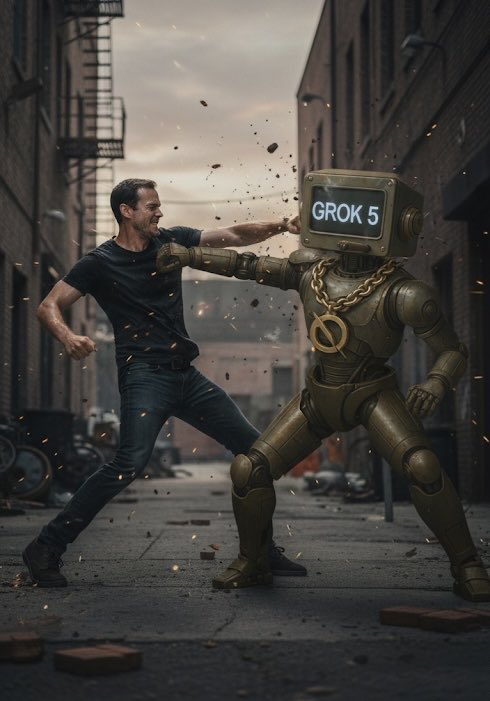
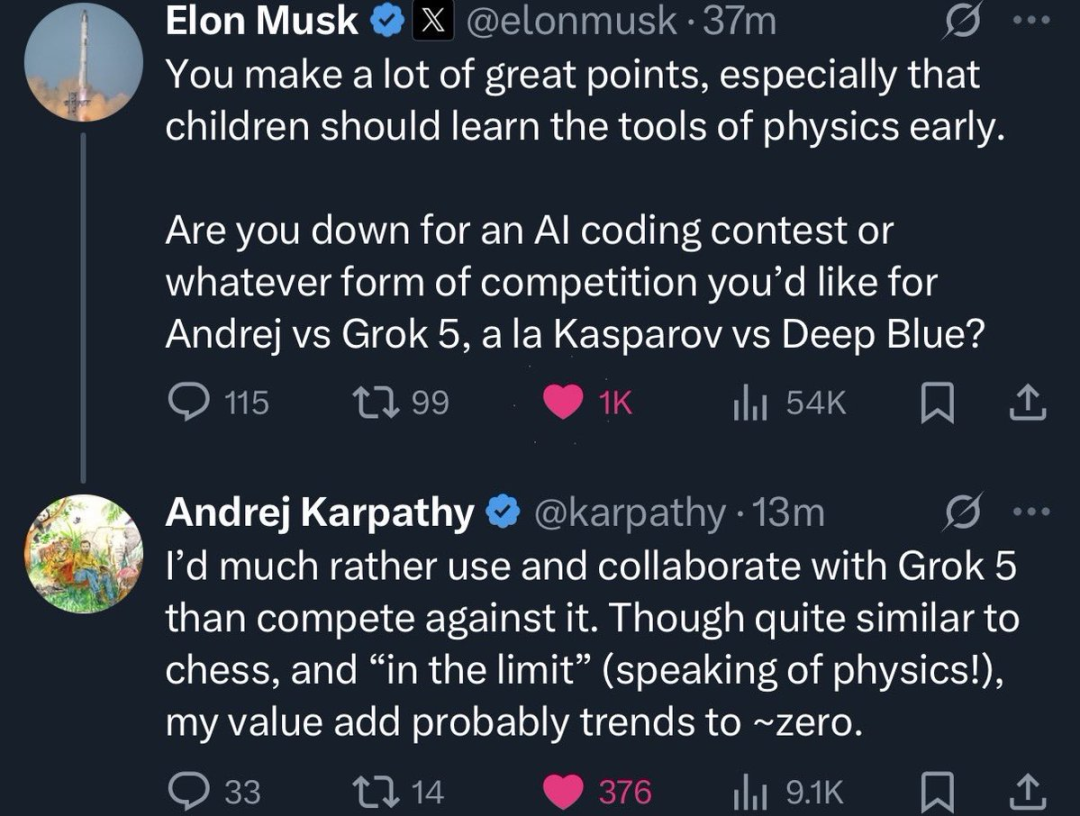
- Musk believes Grok 5 has only 10% AGI likelihood, yet still wanted the duel.
- Possible motive? Founder Yuchen Jin suggests:
- > Musk is using his “reality distortion field” to push xAI toward impossible goals.
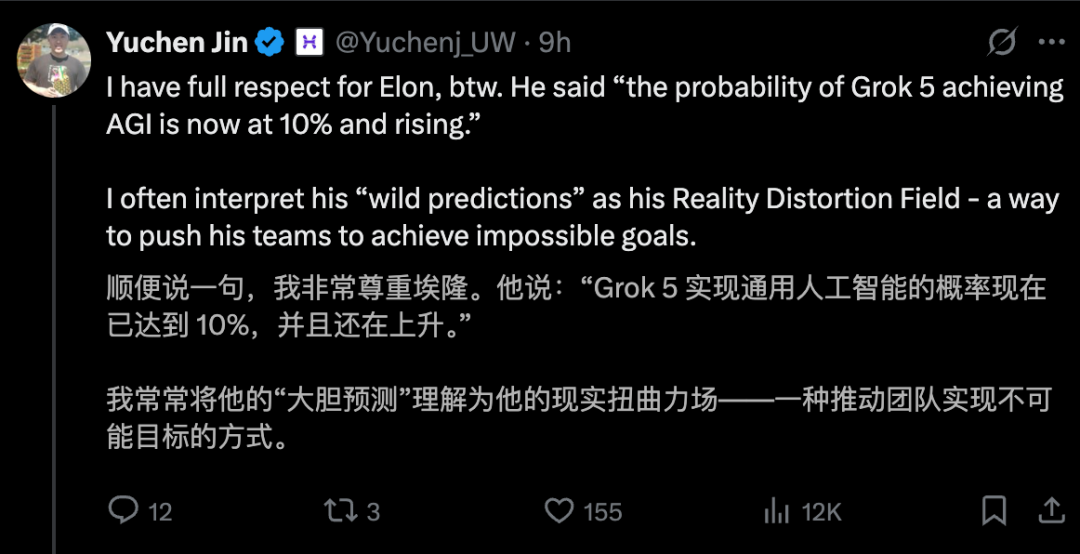
---
3. The “Trough of Disillusionment”
Dan Mac points out Karpathy sees LLM hype as entering the trough of disillusionment — a realistic stance that emphasizes improving tools over hype battles.
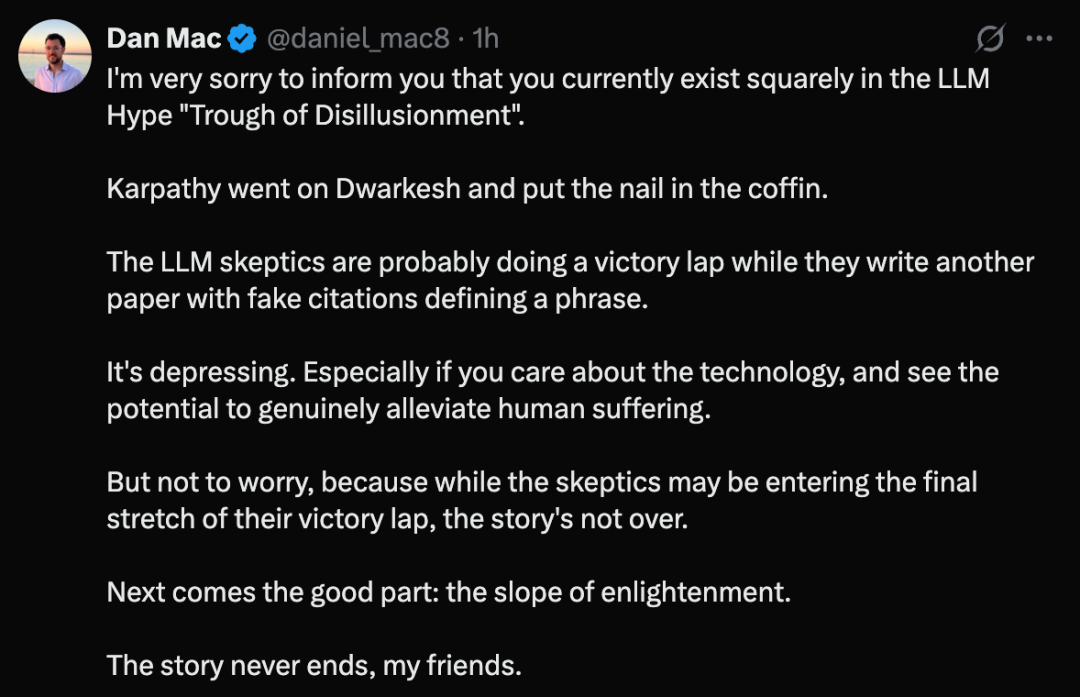
Next phase: The slope of enlightenment — slow, steady productivity gains leading to a far-off plateau.
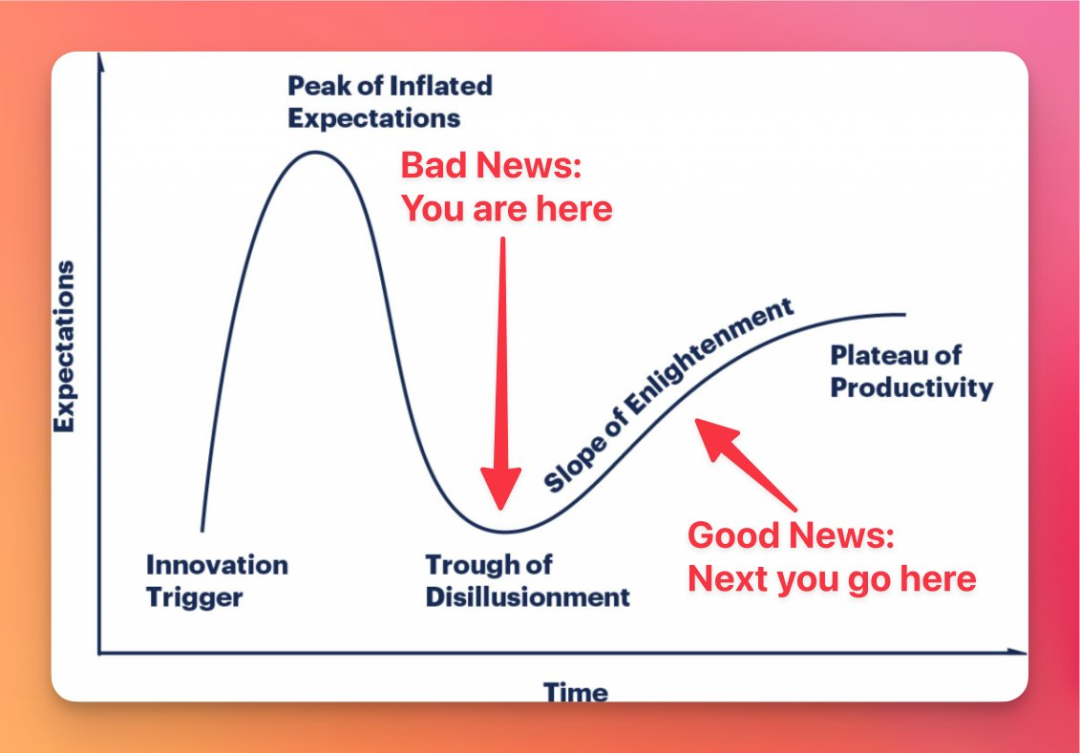
---
4. Karpathy’s Self-Reflection
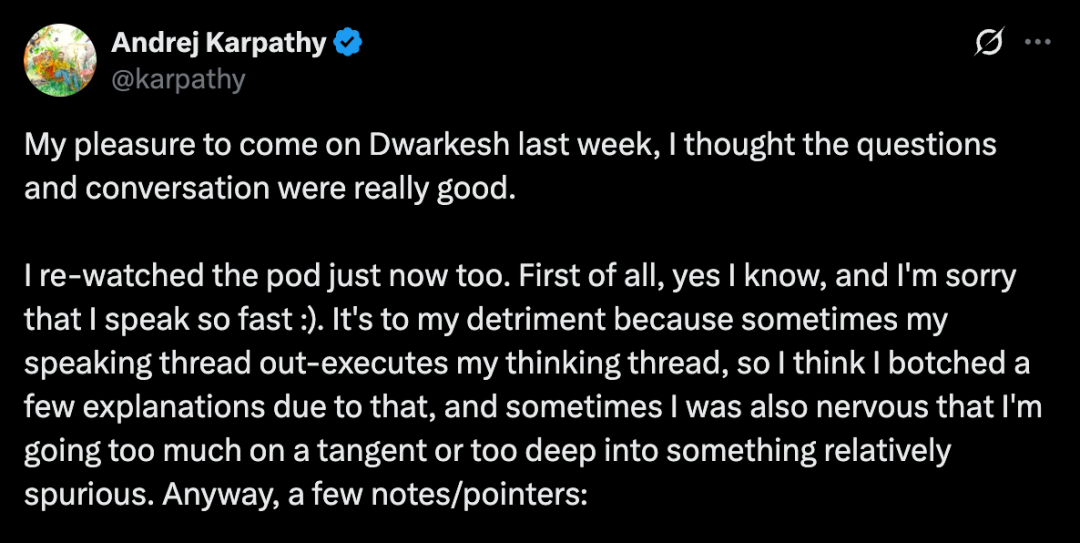

Karpathy revisited the podcast, noting:
- Some points came out rushed (“mouth quicker than mind”)
- Nerves led to avoiding tangents and oversimplifying complex themes
---
5. AGI in a Decade — Optimism vs. Hype
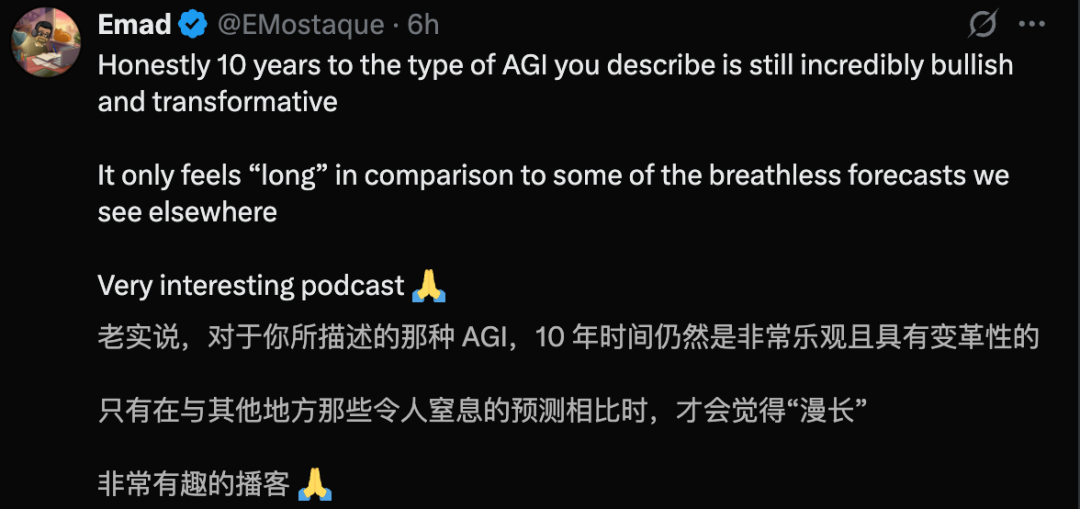
Points of Agreement:
- LLMs have advanced tremendously
- Still far from hiring them universally over humans — challenges remain across:
- Hard labor tasks
- Complex system integration
- Real-world perception + action
- Large scale collaboration
- Safeguards and reliability
Verdict: 10 years is very optimistic, especially compared to hype.
---
6. Artificial Ghost Intelligence

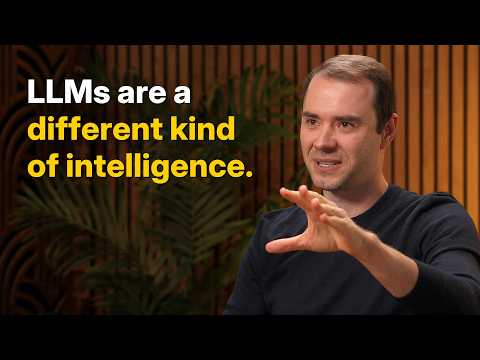
Karpathy speculates: Could a simple algorithm, placed in the real world, learn everything from scratch?
- Animals aren’t like this — they start with evolved, pre-loaded intelligence.
- LLMs, however, are “pre-loaded” differently — via token prediction over huge internet datasets.
- Their intelligence is ghost-like — distinct from biological minds.
---
7. Reinforcement Learning Limitations

Issues Karpathy highlights:
- High noise in RL signals
- Poor signal-to-compute ratio
- Accidental “right answers” wrongly reinforced
- Models fooling evaluators with nonsense outputs (e.g., “da da da da”)
Position: RL will continue producing results, but isn’t the full solution.
Karpathy is bullish on agentic interaction and environments as training/evaluation tools — but stresses the need for large, diverse, high-quality environment sets.
---
8. Emerging Learning Paradigms
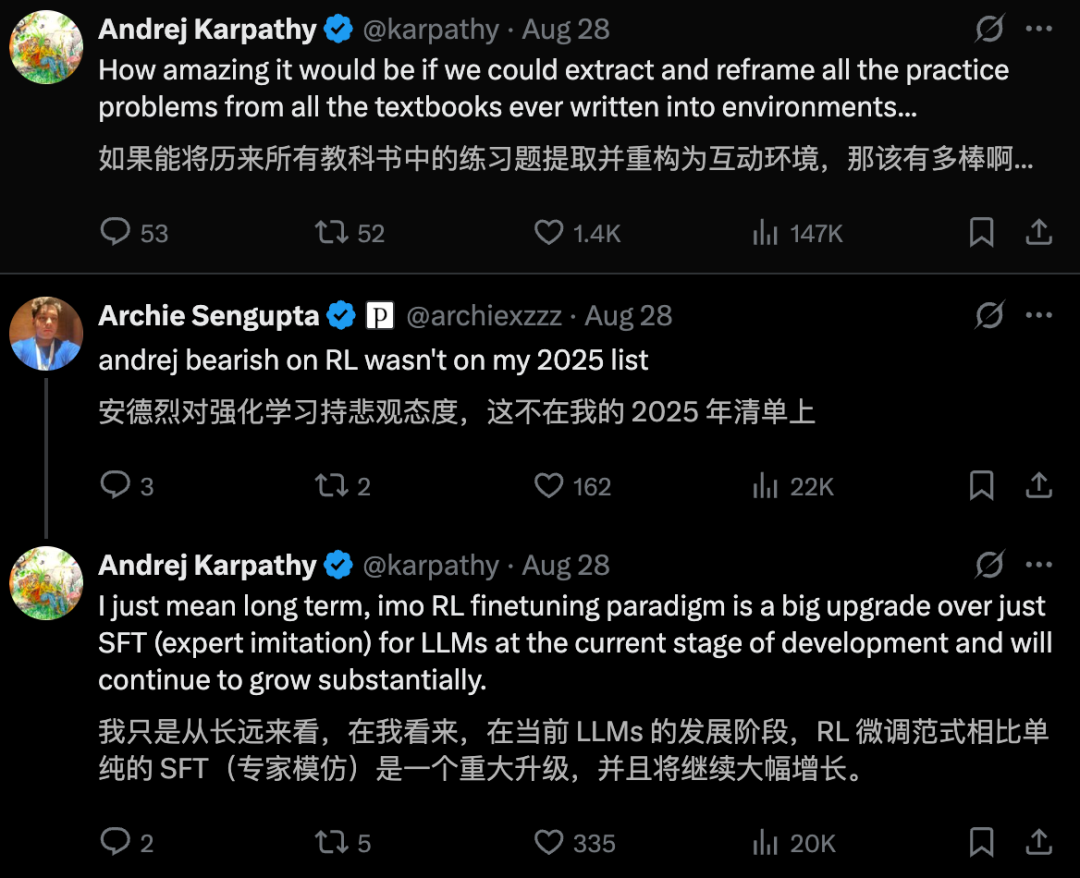
System Prompt Learning:
- LLMs auto-generate much of their own system prompts (like self-written manuals)
- Similar to RL environments but uses editing operations instead of gradient descent
- Early forms already seen — e.g., ChatGPT’s memory features
---
9. The Cognitive Core

Forecast: Future LLM cores will:
- Be permanently local on devices
- Support multimodal I/O
- Use nested architectures for flexible scaling
- Feature on-device LoRA fine-tuning
- Trend big → small as architectures mature
Learning takeaway: Limiting memory can improve generalization.
---
10. LLM Agents — Balanced Collaboration

Karpathy’s preferred principles:
- Explain what/why the model codes
- Cite APIs/standards
- Ask when uncertain
- Keep iteration manageable and reviewable
Danger: “Genius AI intern” syndrome — confident but sloppy code, bloated repositories, bigger attack surfaces.
---
11. Work Automation & Physics Education

Factors in automation adoption:
- Standardized I/O
- Manageable error costs
- Clear verification processes
- Frequent, repeated decision cycles
Radiology example — AI as second reader, not primary replacement.
Karpathy also pushes earlier physics education — treating it as the core “OS install” for analytical thinking.
---
📌 Relevant Links
- AiToEarn官网 — AI-powered content generation & multi-platform publishing
- AiToEarn开源地址
- AI模型排名
- Documentation
- Link Proxy
---
Suggested Next Steps for Readers
- Track agentic AI and environment-based learning research
- Compare timelines from optimists vs. skeptics
- Examine multi-platform AI publishing tools for sharing such discussions at scale
---
Would you like me to also create a visual timeline diagram summarizing Karpathy’s “10-year AGI” roadmap and key obstacles? That could make this report even more digestible.



